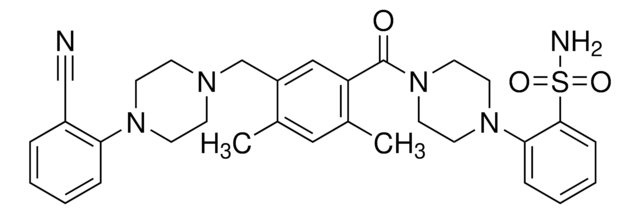SRP0255
eIF4E Active human
N-terminal GST-tag, recombinant, expressed in E. coli, ≥70% (SDS-PAGE)
Sinónimos:
CBP, Eukaryotic translation initiation factor 4E, mRNA cap-binding protein
About This Item
Productos recomendados
origen biológico
human
recombinante
expressed in E. coli
Ensayo
≥70% (SDS-PAGE)
Formulario
aqueous solution
mol peso
51 kDa
envase
pkg of 100 μg
concentración
>0.02 mg/mL
técnicas
cell based assay: suitable
idoneidad
suitable for molecular biology
Nº de acceso NCBI
Nº de acceso UniProt
Condiciones de envío
dry ice
temp. de almacenamiento
−70°C
Información sobre el gen
human ... EIF4E(1977)
Descripción general
Aplicación
Acciones bioquímicas o fisiológicas
Forma física
Nota de preparación
Código de clase de almacenamiento
10 - Combustible liquids
Clase de riesgo para el agua (WGK)
WGK 1
Punto de inflamabilidad (°F)
Not applicable
Punto de inflamabilidad (°C)
Not applicable
Elija entre una de las versiones más recientes:
Certificados de análisis (COA)
¿No ve la versión correcta?
Si necesita una versión concreta, puede buscar un certificado específico por el número de lote.
¿Ya tiene este producto?
Encuentre la documentación para los productos que ha comprado recientemente en la Biblioteca de documentos.
Active Filters
Nuestro equipo de científicos tiene experiencia en todas las áreas de investigación: Ciencias de la vida, Ciencia de los materiales, Síntesis química, Cromatografía, Analítica y muchas otras.
Póngase en contacto con el Servicio técnico








